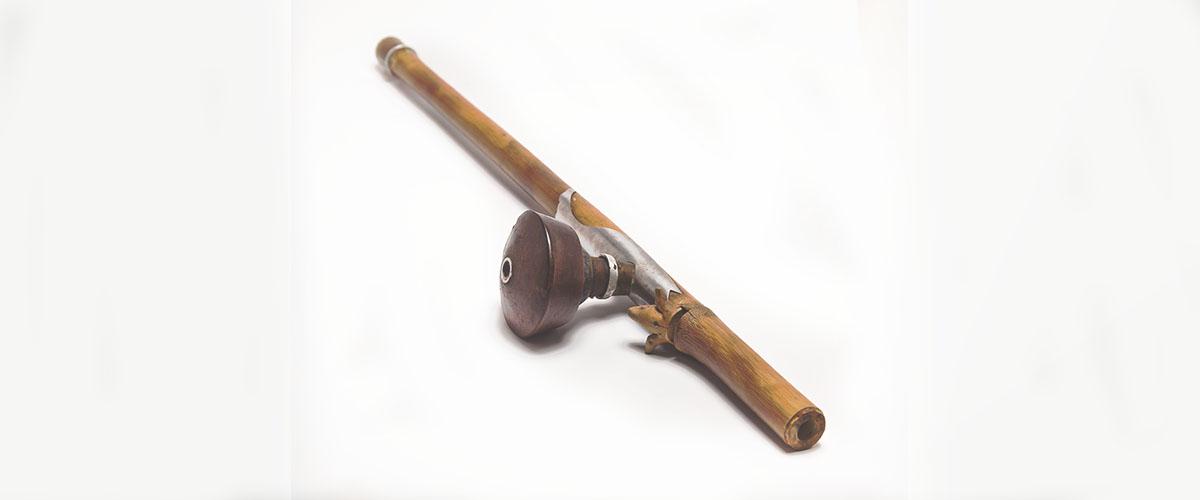Opium Pipe

Accession Number:
2023.12.5Opium use spiked in 18th- century China when Britain and other Western countries traded the drug. At that time, opium was grown on plantations in India and exported by European traders, who then sold the drug to people across China. Smoking opium became very popular there, and people of all social classes opened, operated, or visited businesses where they could use the drug.
In the United States, San Francisco became the first city to make operating or visiting an opium den illegal in 1875. These laws coincided with growing international efforts to slow the opium trade as addiction spread. China continued to advocate for ending the trade that affected their citizens but was controlled by Europeans. In 1909, the International Opium Commission convened in Shanghai and recommended that nations regulate opium’s “manufacture, sale, and distribution” and respect the laws of those nations that prohibited its importation.
In response to the commission, the United States passed the Smoking Opium Exclusion Act in 1909, the first federal ban on any drug. The law prohibited the importation of opium except for medical purposes. Since smoking opium was not used medicinally, the law almost totally banned the drug in the U.S.
Click here to view this artifact's episode of "Stories from the Collection," a monthly video series on the DEA Museum's most exciting objects.


